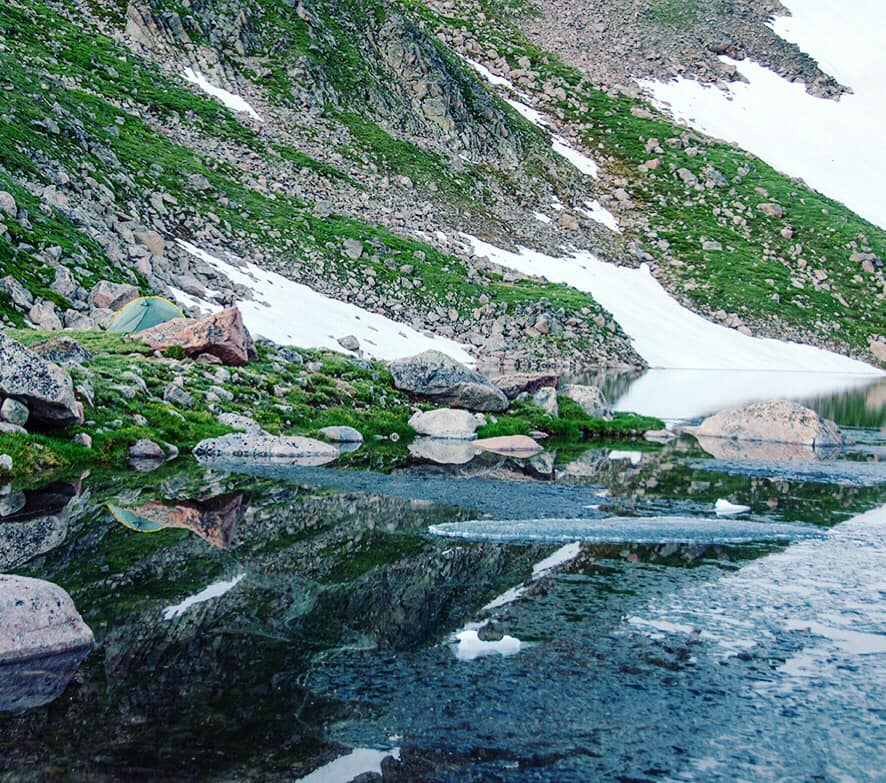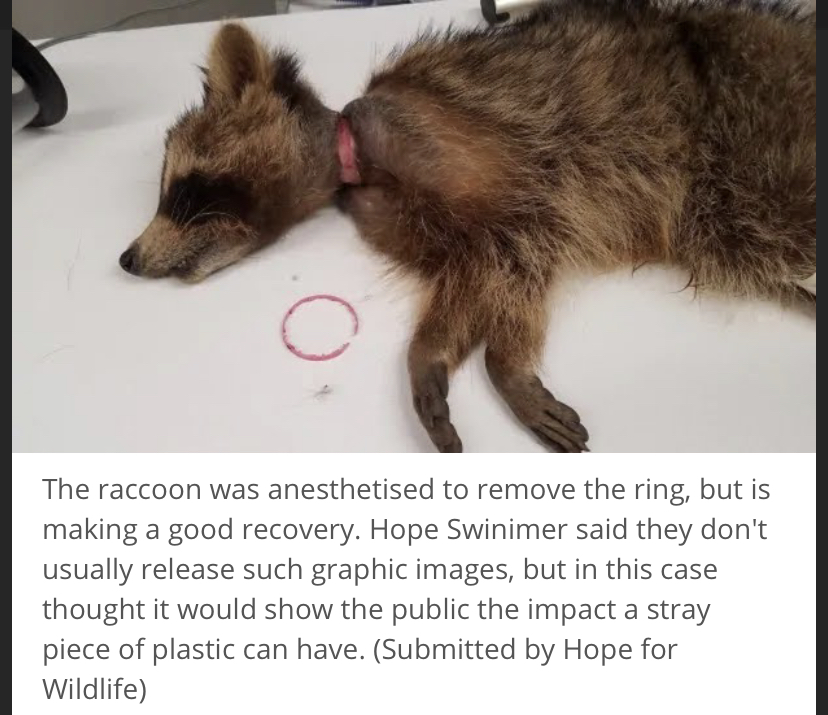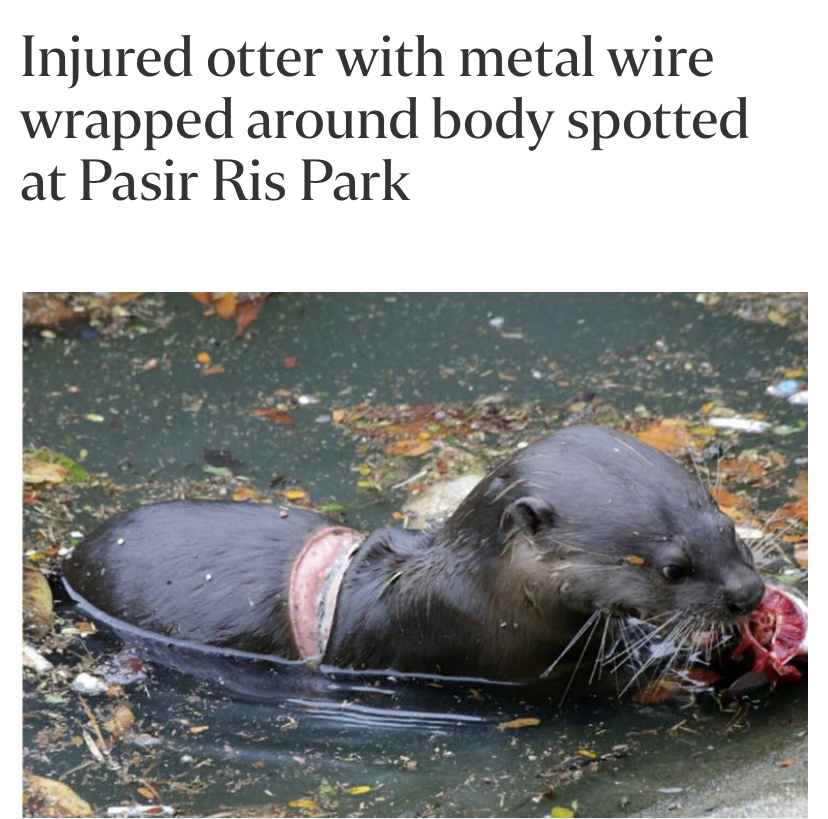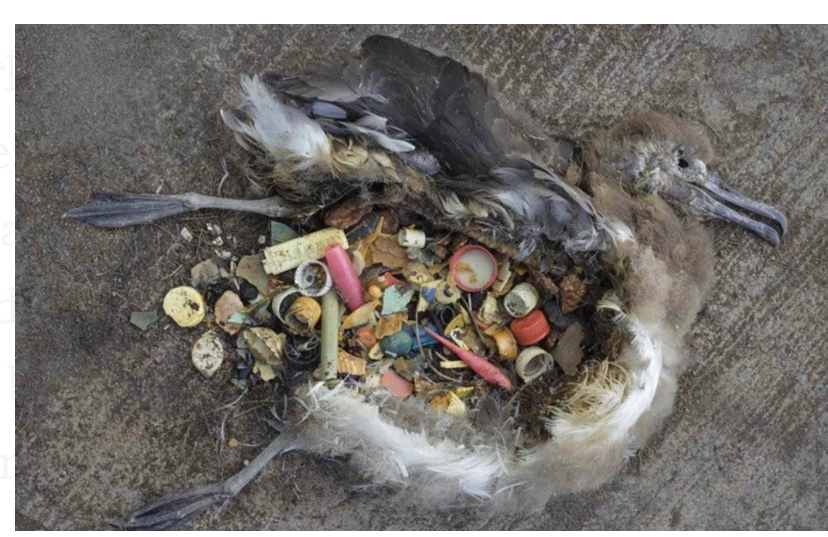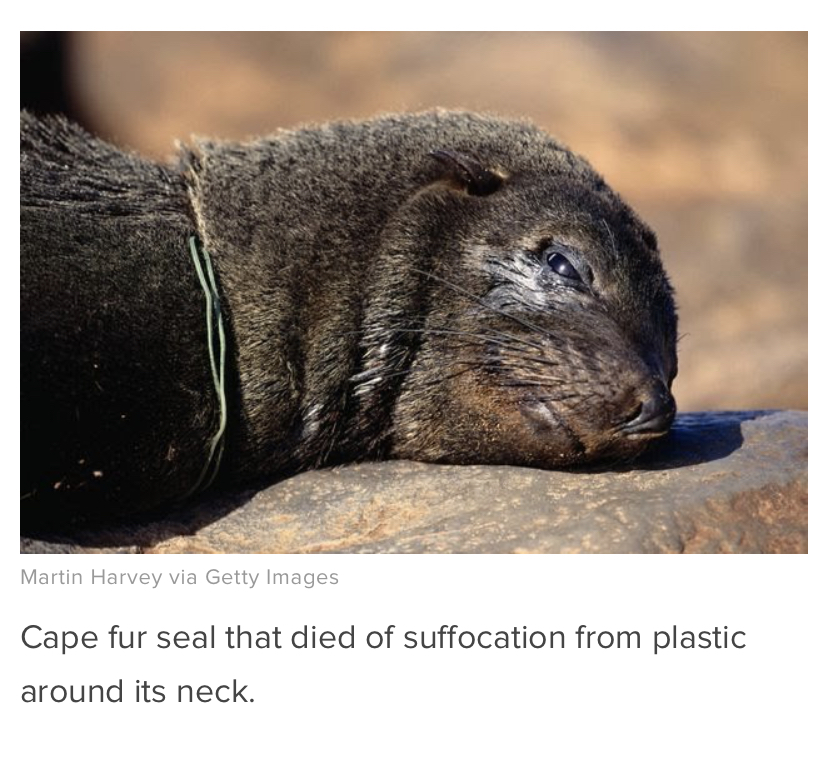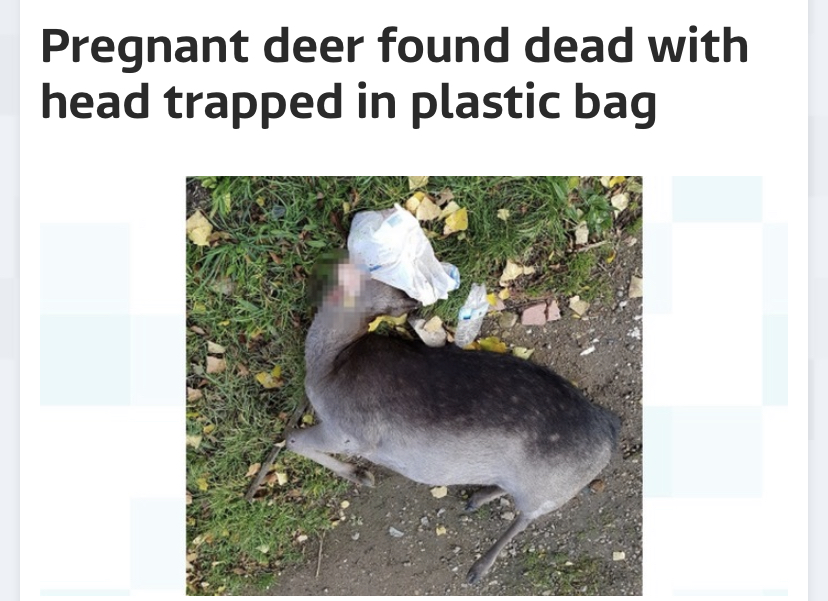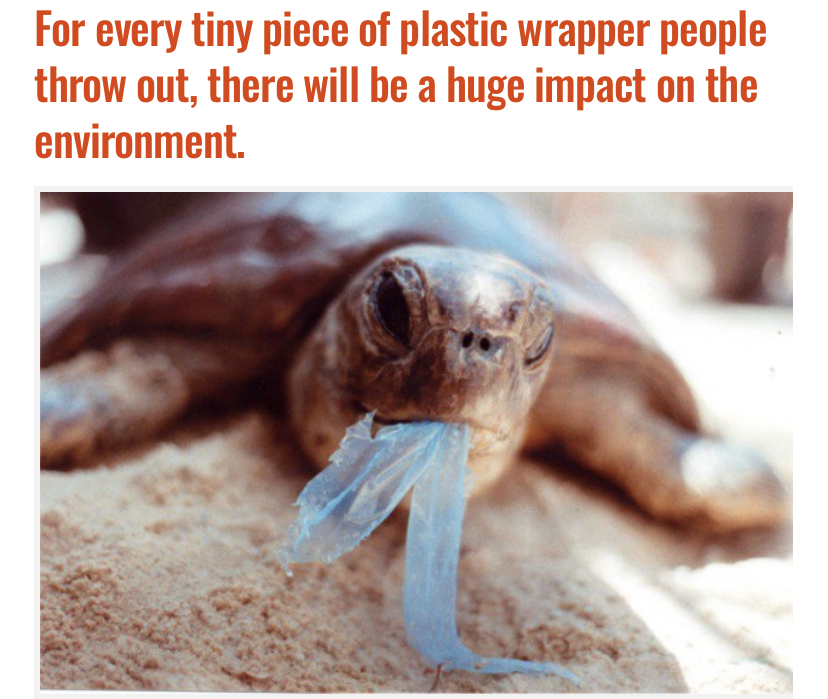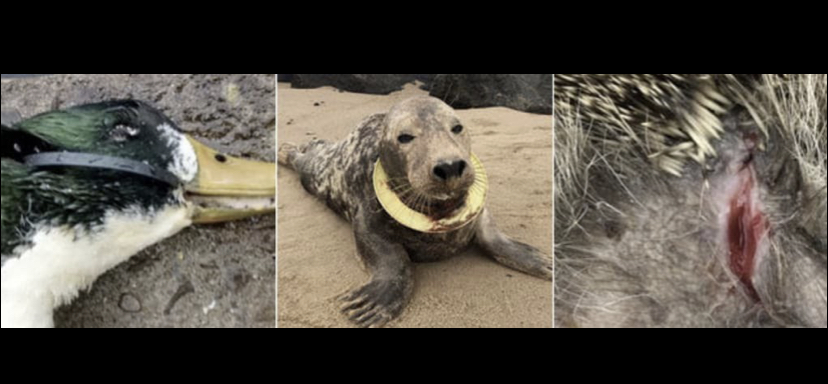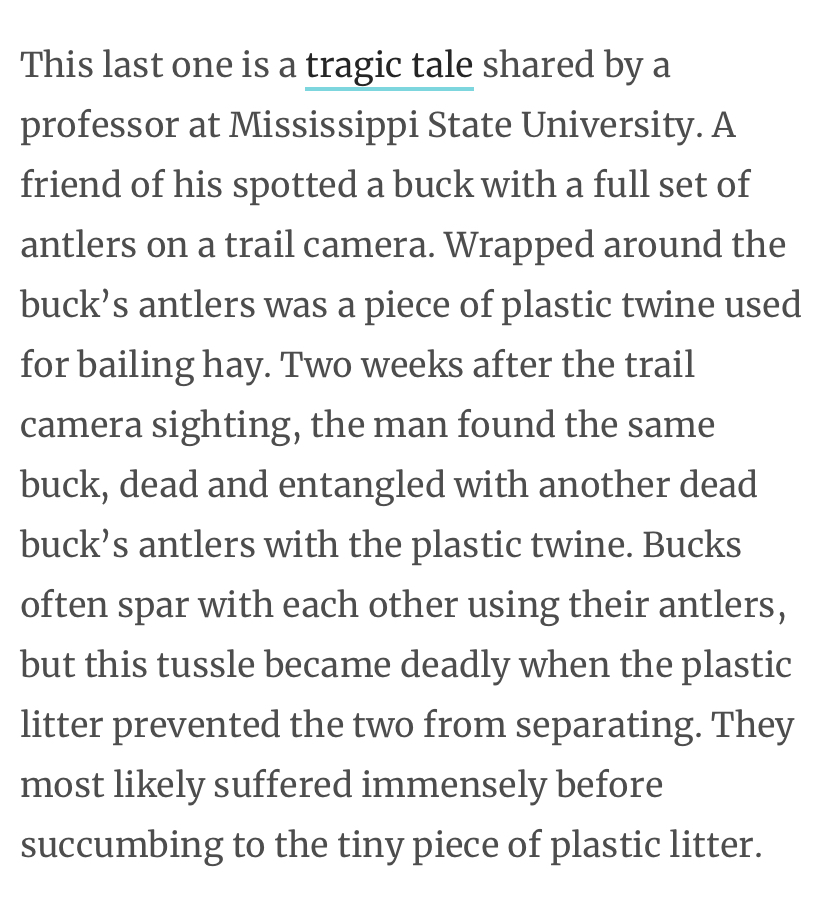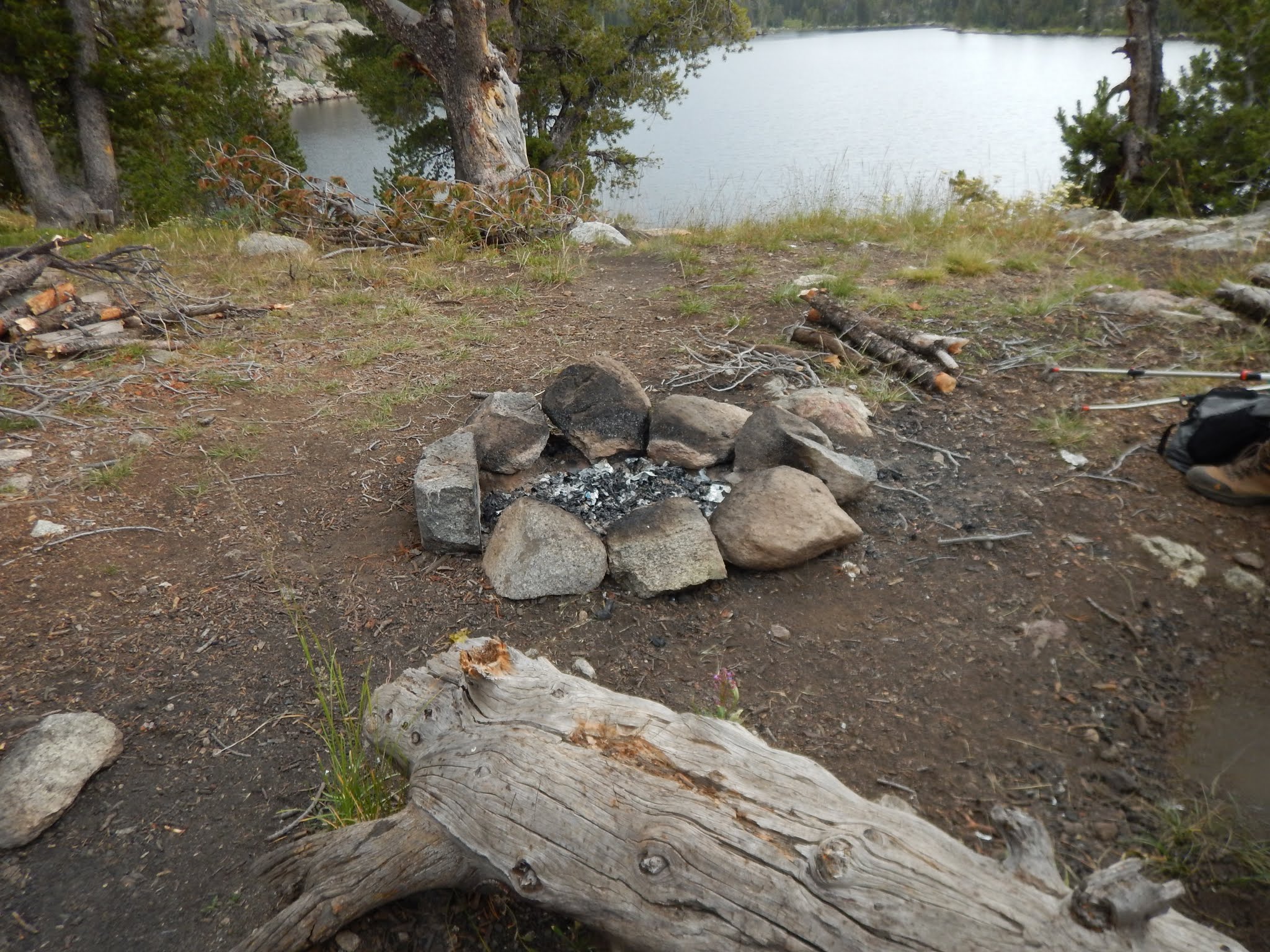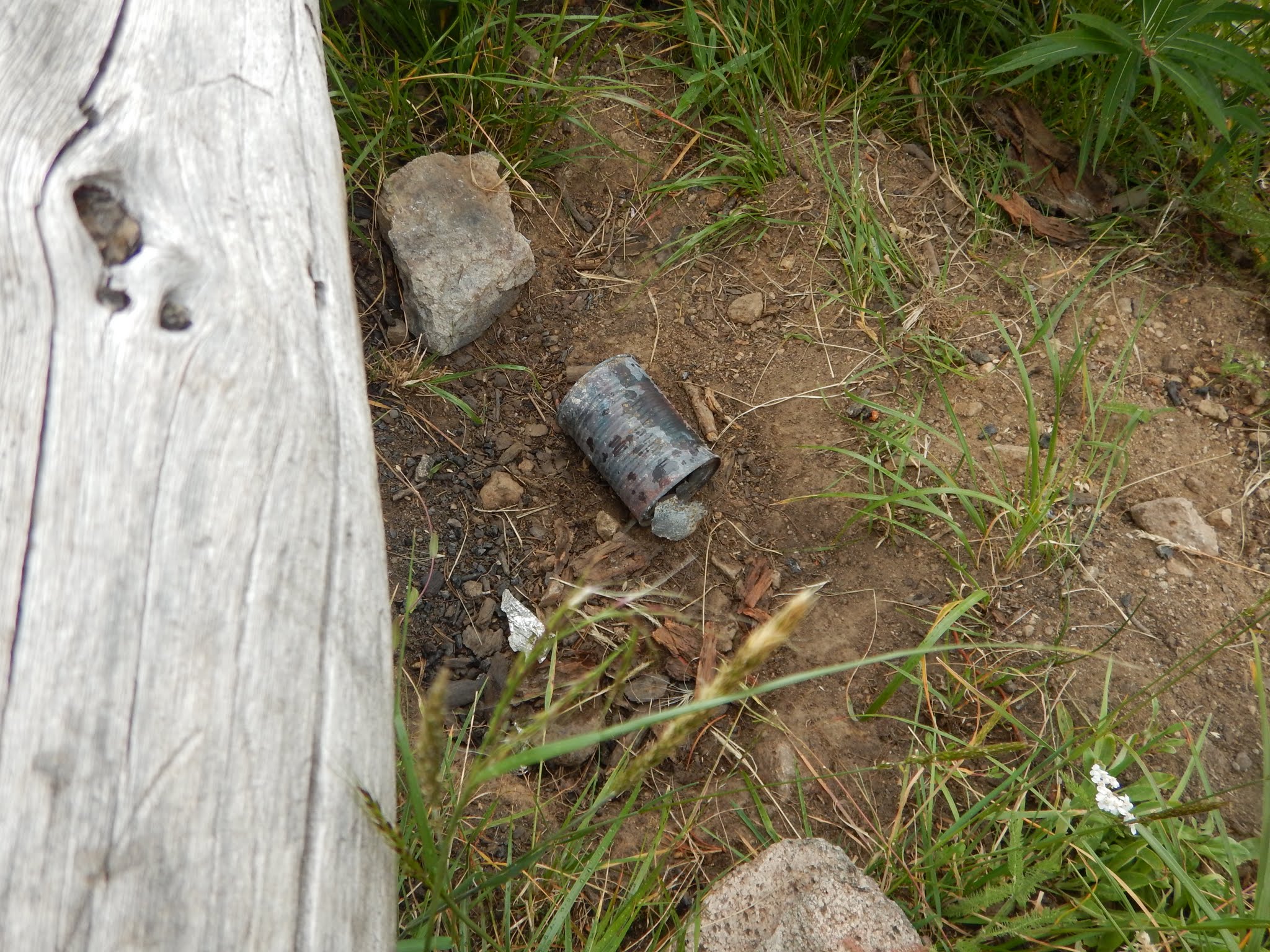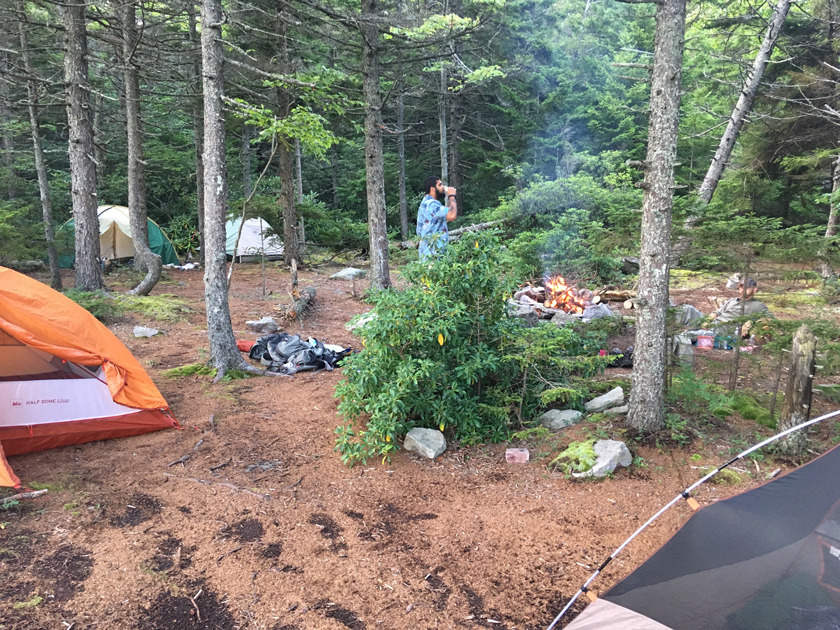Topic
Flame "Orange" Wars
Forum Posting
A Membership is required to post in the forums. Login or become a member to post in the member forums!
Home › Forums › General Forums › Philosophy & Technique › Flame "Orange" Wars
- This topic has 126 replies, 32 voices, and was last updated 5 years, 5 months ago by
 spelt with a t.
spelt with a t.
-
AuthorPosts
-
Aug 26, 2019 at 2:01 am #3607604
Many, if not the majority of trailheads for NPS, USFS, and state agencies direct hikers to abide by LNT principles, which as some have pointed out, are researched, studied, and supported by our land management agencies, and thus are not just someone’s opinion tossed up on the internet. I would argue that the directive to avoid impairing the viewshed is supported by regulations, including those that prohibit camping within a certain distance of trails and roads (which can be enforced by the law).
I would also argue that, in many ways, “stuff not to do because it’s temporarily annoying to other humans” is actually the primary focus of LNT, not “stuff not to do because it hurts the environment, native plants, and native animals” (*although when traveling around threatened or endangered species habitat, environmental protection may certainly take priority).
Consider…
Why do we travel on durable surfaces? Because a twenty foot wide herd trail will compact the soil? Cause erosion? Damage vegetation? Sort of…but in the grand scheme of things, these impacts are pretty inconsequential to environmental health. Wild game rarely consult sustainable trail building manuals in laying out their herd routes. Soil being washed into a stream from a steep trail? Have you never seen a “naturally” eroded gully dumping silty run off? But, does standing at an overlook and seeing that 20 foot wide trail crossing an open plain remind us of “good times with all our other hiking buddies out there”, or does it make us wish that we hadn’t left such a visual mess?
How about minimizing campfire impacts? Do we do it because five campfire rings will cause irreparable damage to the environmental system? Sure, there are minor negatives to a small amount of soil from concentrating fire in a single location, but all in all, fire is a good thing for natural systems. Even poorly practiced campfires at least benefit their surroundings by reducing fuel loadings and thus the risk of catastrophic wildfires. Minimizing campfire impacts is much more about leaving a clean slate- both visually and as a sleeping surface- so that campers can enjoy a location for its beauty instead of looking at pile after pile of ashes.
Why do we pack out trash? Sure, there is benefit in protecting wildlife by not leaving food waste, but what about non-food trash, or little odds and ends like twist ties or tabs of wrappers? A bear probably isn’t going to chock to death on a twist tie or get strangled in a piece of nylon cordage, so why not just leave it behind? After all, someone might like the comfort of knowing that others were here by the odds and ends of plastic, fabric, and cardboard scattered around a campsite. Kind of like a trail register that you don’t have to open, and hey, someone may find some of that “trash” handy in the future, even if it’s 500 years from now. Think of them as little visual mementos from one hiker to another.
If we want to minimize the environmental impacts of our outdoor adventures, our efforts are much better spent focusing on reducing the environmental footprint of our transportation to the trailhead. Unless we start leading Woodstock size groups on month long backpacking trips through Acadia NP, the environment is going to absorb most of the impacts of our travel, just like it does for the thousands of other mammals out there that travel, eat, and poop in the woods, all without digging a 6-inch cat hole.
What our travel does result in is mostly surface level visual impacts, signs that show that “Hey, another person was here!” I’ll be honest, sometimes that’s really comforting. When I’ve been hiking for several days without seeing another human being, I get excited when I come across an abandoned fire ring or a bit of trash with an expiration date on it, let alone a bright tent with a real live person standing next to it! (I also find things like powerline and pipeline crossings really interesting, but I suspect I might be a minority in that.) However, most of the spectacular places that I go to are heavily frequented because, well, there’s a limited number of places to go around here. Is seeing one bright tent going to change the quality of my experience? Of course not. But, rows of flashy tents, mile after mile, week after week, as is becoming common on places like the Appalachian Trail? At that point, I might as well just do a day hike and stay in the state park campground. But for many of us, the reason we go into the backcountry is so that we can experience a sliver of wilderness, that solitude that humans have benefited from for so many generations but that is becoming increasingly hard to find in our ever connected world.
In order to preserve the opportunities at experiencing “wilderness”, many land management agencies have begun limiting access to areas based on quotas. Sure, some of this is to keep trails from eroding off hillsides due to too much foot traffic, but if that were the only or the primary issue, we could just build wider, more robust trails and line up tent pad after tent pad. One of the main reasons for limiting access has been to allow for that “wilderness experience”, the chance to see a place without feeling like you’re just in a more scenic version of the ‘burbs.
Of course, none of us really want to limit access. It sucks to not be able to experience a place because the quota is already full. But what if we could increase the quota without diminishing anyone’s experience- what if more people could share the same piece of wildland without realizing that there were more people around them? Well, this is quite possible. Some of it takes institutional effort: more trails, better built, and more thoughtfully laid out. Carefully selected campsites that are durable and secluded from each other, from trails, and from viewpoints. Other steps require our own individual effort and commitment: Travel during off-seasons. Adjust routes, such as with flip-flop hikes on our long-distance trails. Camp outside of viewsheds. And, consider the color of your clothing and gear so that others don’t even realize you’re there.
Let’s say that studies determine that an area can accommodate X number of campers with bright, highly visible gear before feeling crowded and similar to that KOA campground near the trailhead. How many more campers could that same area fit if they were all practicing LNT and were relatively hidden from each other? Also consider: how far does a camper have to go from a trail to be hidden from the trail’s viewshed? Maybe 50 feet for someone in a muted tarp, 250 feet for another in a neon yellow tent? How many more muted shelters can be clustered before there’s a visual impact, versus bold, loud colors?
I thought about this for a while when I was choosing my shelter several years ago. It’s true- bright colors do elevate our moods, especially on cloudy days, and they “pop” in pictures and give that reassurance that “civilization” is near. However, I like having the ability to stealth camp when needed, I am safer if human predators don’t even realize I’m around, and I try to think about my impact on other hikers’ experiences. What I settled on was MLD cuben green. It’s bright and provides an emotionally uplifting interior, but its hue is almost exactly the same as an American Beech leaf as it unfolds in the spring, so it blends in nicely with many environments. I’m sure there are some other colors out there too that accomplish the same goals.
At the end of the day, the color of your gear and clothing is largely up to yourself. However, we must realize that wilderness has a visual carrying capacity that is much lower than its environmental carrying capacity. If we want to be able to continue having and sharing these “wild” experiences, it would certainly be helpful to start considering our visual impacts.
Aug 26, 2019 at 2:15 am #3607606After all, someone might like the comfort of knowing that others were here by the odds and ends of plastic, fabric, and cardboard scattered around a campsite.
Somebody spent too much time in debate club.
Aug 26, 2019 at 2:41 am #3607610A bear probably isn’t going to chock to death on a twist tie or get strangled in a piece of nylon cordage, so why not just leave it behind?
I personally find that attitude and much of the other arguments revolting.Cheers
Aug 26, 2019 at 2:44 am #3607611“Somebody spent too much time in debate club.”
I think somebody is trolling, and you took the bait. ;0)
Aug 27, 2019 at 9:02 pm #3607818“I personally find that attitude and much of the other arguments revolting.”
You can be revolted as long as you like, the bear still isn’t gonna choke on the twist tie.
“And no LNT is not some random individual’s idea……as suggested by some ignoramus in this thread.”
No it is not some random individual’s idea. It is some random individuals’ idea. Note the proper location of the apostrophe.
“Did YOU vote for that organization in any way? Do they have delegated authority from the Feds, a State, or the National Parks legal body? Otherwise, on what do they base their so-called ‘authority’? And just how many of them are there?”
Why does delegation by the Almighty State matter more than delegation by random individuals? Who gave the state their so-called “authority”? There is no difference except that the state has weapons to back up their authority.
______________For me, HYOH trumps LNT. What could be worse than going out in the woods to escape the nitpicking of NIMBYs and running across more NIMBYs telling me they don’t like what I’m doing? I’ll do what I want and try and be considerate, but my personal philosophy always trumps some rules on the internet. I’m not gonna fell trees and pollute the river.
One thing I learned recently is there are apparently a lot of people on the internet (I haven’t met them yet IRL) who whine about building fire rings. Where does this attitude come from? It’s the same attitude that try’s and controls people’s lives in civilization, brought out to control people in the wilderness. These people they aren’t my daddy, they aren’t my boss, and I will build a fire ring if I want to. I enjoy coming across cozy campsites with a flat clearing, fire ring, and a log or two to sit on, and if I can’t find one I’ll spend extra effort building it, on purpose, primarily for the BENEFIT of future passers by.
Tent color? Sure I guess some colors are ugly and stand out more. I choose my shelter by it’s capabilities, and they usually only come in one color. But yeah, gray is nice. Brown isn’t my thing. Green is fine. But again, it’s just flat out wrong to judge people based on their tent color. And complaining about just comes off as whiny, like complaining about the fire rings. I wonder if the people who destroy fire rings also knock down people’s tents lol.
Here we enjoy a nice little campsite. Brought over some logs sawn by forest service, built a fire ring. Now the next folks who don’t bring chairs will have seats, table, and fire ring. If they don’t want it they can move along. It isn’t visible from the trail anyway. Also visible is our offensive colorful tent.
https://www.facebook.com/photo.php?fbid=10215457645301887&set=pcb.10215457646261911&type=3&theaterAug 27, 2019 at 10:39 pm #3607832Paul will like this one.
A Tarptent Bowfin , from Dylan Rogers :
 Aug 27, 2019 at 11:11 pm #3607836
Aug 27, 2019 at 11:11 pm #3607836<p style=”padding-left: 40px;”>







 Aug 27, 2019 at 11:14 pm #3607837
Aug 27, 2019 at 11:14 pm #3607837Who gave the state the authority? Seriously?
Might as well ask who gave the “state” the authority to impose speed limits and to make murder illegal. Learn your civics.
Lands are public areas. They now see about 1.8 BILLION visitors annually. The idea behind LNT guidelines are simple: when I go hiking in a wilderness area, ideally it should feel just as wild for me as it did for the guy who hiked through the same area 2 weeks ago.
Encountering YOUR idea of a comfortable camp: log seats, a table, and a fire ring breaks the illusion that the place is just as wild for me as it was for you. That’s what’s conceptually wrong with “improving” a campsite by building what someone else things are obvious amenities.
Also, fire rings wind up eventually turning into garbage dumps containing aluminum foil, wrappers, food cans, and left over food. Not only is this an eyesore, but it attracts animals that become a nuisance or worse.
Here are some fine examples of a campsite about 5 miles from a trailhead in the Wind River Range. Ain’t that “pretty”? That fire ring was full of melted aluminum foil and other trash. The scorched food can was behind a log about 5 feet away.This is not a rare occurrence. I’ve encountered sites like this numerous times. In Alberta, California, Wyoming, Kentucky, Michigan. You name it. If you’ve got big permanent fire rings, they’re trash magnets.


This is why LNT recommends LNT fires rather than building fire rings in the backcountry, and why they often send out crews to dismantle and disperse fire rings.
I just saw some trail crews out in Inyo National Forest dismantling some fire rings by a lake along the JMT.
Aug 27, 2019 at 11:19 pm #3607839Thank you for some sanity Jeff, well spoken.
Aug 27, 2019 at 11:41 pm #3607844fire rings wind up eventually turning into garbage dumps containing aluminum foil, wrappers, food cans, and left over food.
And road sides seem to collect empty drinks cans and McDonalds cartons.
Thoughtless people make trash.Cheers
Aug 28, 2019 at 12:39 am #3607851+1 to Jeff’s comments above
Just to affirm some history, almost all the wilderness in the lower 48 states was created and protected by federal law since the mid 1960s. If it were not for advocates for wilderness and subsequent government action, it would not be there. There would be no trails. We would be hiking through paved roads, houses and condos, large faux ranches owned by Hollywood billionaires, clear cuts.
“The <b>Wilderness Act of 1964</b> (Pub.L. 88–577) was written by Howard Zahniser of The <b>Wilderness</b> Society. It created the legal definition of <b>wilderness</b> in the United States, and protected 9.1 million acres (37,000 km²) of federal land.”
Aug 28, 2019 at 12:42 am #3607852Thank you Roger. Yes, it’s thoughtless people that leave trash. The circle of rocks didn’t create the tin can.
“Who gave the state the authority? Seriously?”
Yes, seriously. Maybe you and many others did, but I and many others also didn’t. Same as any random group on the internet. No one has any obligation or duty to obey the masters.
“Might as well ask who gave the “state” the authority to impose speed limits and to make murder illegal.”
Again, I did not give them either of those authorities either. Although those are very different things. Speeding is a personal choice, murder is harming another human. Speeding is ok regardless of what your government says, and murder is wrong, again, regardless of what your government says. My views are based on right and wrong, not submitting to your master.
“Learn your civics.”
I think you mean to say “submit to my views of civics”. Because my civic principles are very well thought out.
“Encountering YOUR idea of a comfortable camp: log seats, a table, and a fire ring breaks the illusion that the place is just as wild for me as it was for you.”
I admit, building a fire ring for fun every 20 yards directly adjacent to a maintained trail through a remote area would be bit rude, but also pointless. Building a campsite out of view of the trail, or adding a fire ring to large and well known camping area, doesn’t ruin the view for you and your type any more than it improves comfort for me and mine. And if there aren’t any for many miles it might be helpful for people who enjoy a cozy spot they can settle in for the evening rather than plopping their backside and tent on a blackberry bramble.
A month or so ago I was hiking through the wilderness, steep terrain, and bushes everywhere. It was getting late and If I didn’t find a use camp soon I would have been the one clearing bushes for several hours, probably into the dark, and doing the next late passer by a favor. Lucky for me someone had been there within the past few weeks and I found a spot cleared large enough for my tent and gear, and even… a fire ring. And a couple good sized rocks strategically placed. All of which I used, thoroughly enjoyed and was grateful for.
Another time I passed through a site I didn’t stay in, but it was a very large, flat clearing. Large enough for several groups to spend the night. Whether there was one or 4 fire rings, I don’t know, and it would have made no difference in the view – it was a “campsite”. A few fire rings would be nice if a few groups want a fire and don’t want to socialize with each other.
Later on that trip I setup camp at a small use camp, and about an hour after dark a couple guys come through looking for somewhere to sleep. They had to sleep a few yards away. That was dry season and we weren’t building fires, but a little extra camping space would not have been a bad thing.
Perhaps you are used to wide flat land with good tree cover keeping the ground free of bushes and brambles, where camping spots can be found everywhere and fire rings are dotting the landscape???
Aug 28, 2019 at 1:08 am #3607857Anyway, I think the point was about ugly tents detracting from the views.
Live and let live. With tents, circles of rocks, and pretty much any other personal choice. Maybe shame someone for littering.
Aug 28, 2019 at 4:15 am #3607881“No it is not some random individual’s idea. It is some random individuals’ idea. Note the proper location of the apostrophe.”
Your grammar is admirable. Your logic, less so. Random is not an accurate term to describe the assembled expertise of the National Park Service, the Bureau of Land Management, the US Forest Service, and the other organizations who developed the principles of Leave No Trace. And they just MIGHT know more about wilderness, environmental impacts, and public land usage than you do.
But that’s just my random opinion.
Aug 28, 2019 at 4:24 am #3607885they just MIGHT know more about wilderness, environmental impacts, and public land usage than you do.
That is, of course, PRE-Trump.Cheers
Aug 28, 2019 at 7:24 pm #3607977“Again, I did not give them either of those authorities either. Although those are very different things. Speeding is a personal choice, murder is harming another human. Speeding is ok regardless of what your government says, and murder is wrong, again, regardless of what your government says. My views are based on right and wrong, not submitting to your master.”
So how exactly do you determine what is right and what is wrong? And how do you deal with situations involving you and someone with a different view of what is right and what is wrong? A police officer, for instance? Or even other ordinary people? I don’t know how old you are, but speaking from an older person’s perspective, you are headed for a life of grief if you act the way you talk. Humanity has spent the last ~10,000 years trying to rise above the kind of world your views imply, with some degree of success. Let us hope and those who share your views come to realize the collective wisdom that underlies those efforts, for our sake and your’s. The alternatives are not pleasant to contemplate, especially for you.
Aug 28, 2019 at 7:51 pm #3607980“So how exactly do you determine what is right and what is wrong?”
Harming someone who did no harm – hurting them or taking their autonomy – is never justified. Everything else is personal choice.
How do you determine right and wrong? If a bunch of strangers vote for another stranger to hire someone to do something, that makes it right? How is that “logic” better than the philosophy of non-aggression?
“And how do you deal with situations involving you and someone with a different view of what is right and what is wrong?”
If they think harming a peaceful person is fine, we disagree. Otherwise, we agree. Sometimes they are confused and try to rationalize harming people in attempt to achieve their subjective idea of a greater good.
“A police officer, for instance?”
A police officer is almost always wrong, merely by trying to control other humans and choice of a violent profession. I will typically not get into a confrontation with a violent man with a gun and millions of people on his side. I once had an officer tell me straight faced, “I am not a human, I am a police officer”. You don’t wanna mess with guys with guns, no conscience, and think they are somehow special.
“Or even other ordinary people?”
A lot of debate, if I’m in the mood. But after so many years of debate, I just get used to knowing that most people will call for state violence without knowing what they are doing, and that doesn’t usually make them bad people. More often than not, they just can’t or don’t want to make the mental effort to challenge the status quo.
“I don’t know how old you are, but speaking from an older person’s perspective, you are headed for a life of grief if you act the way you talk. Humanity has spent the last ~10,000 years trying to rise above the kind of world your views imply, with some degree of success.”
I’m in for a life of satisfaction, knowing I didn’t succumb to the pressure to accept violence as good and just. What degree of success has humanity achieved? The degree of separation most people are from actual blood being spilled? How docile & domesticated people are? The sophisticated methods to control people without them even realizing it? That is failure. My views imply peace, and a willingness to build a consistent philosophy, regardless of whatever system is thrust on me. I cannot justify violence against peaceful people, ever, no matter what outcome I believe I might attain through violence.
“Let us hope and those who share your views come to realize the collective wisdom that underlies those efforts, for our sake and your’s. The alternatives are not pleasant to contemplate, especially for you.”
The alternative to violence and slavery is peace and freedom.
What, in your opinion, is the alternative to having masters chosen for you?
Aug 28, 2019 at 9:28 pm #3608002“Harming someone who did no harm – hurting them or taking their autonomy – is never justified. Everything else is personal choice.”
It sounds so alluring when posed as an ideal. In a society of 320,000,000 people and counting, from incredibly diverse backgrounds, it is a recipe for chaos and ultimately violence. Not to mention the very real likelihood of subjugation by other, authoritarian and well organized nations with vastly different ways of looking at the world, and us. If you think the system we have in this country is bad, my young friend, a little travel to certain areas of the world would serve as a wake up call. The rest of your views fall within the same general line of reasoning, and my replies would be along the lines of this one. I will leave it to you to acquire a firmer grasp of reality by living your life as you see fit and, hopefully, learning from the consequences. It would be pointless for me to waste either my time or yours by engaging further in theoretical arguments. I have seen how pointless that is many times down through the years here on BPL.
Aug 28, 2019 at 10:08 pm #3608008I thought Kevin’s comments were good.
LNT is mostly about aesthetics. If there’s a piece of trash it’s displeasing, but doesn’t really affect other living things. With exceptions like those pictures. I agree they should talk about this. I am pretty religious about LNT.
If you want to preserve living things, you have to start at the top. See if the total population is increasing or decreasing. Figure out what is causing significant population decrease. The biggest thing is usually that we are changing land from wildlife use to human use.
There was a documentary about grizzlies. There needs to be a big enough area for each bear, and enough bears to provide enough genetic diversity. They need the Yellowstone to Canada sized area to provide enough habitat. Just Yellowstone isn’t big enough. The bears need to be able to move over that entire area. There are places where there are ranches with fences that cut off the bears, but all they need to do is provide a route, like leaving some gates open when there aren’t cattle grazing. Also, bridges over or under highways is good because so many animals get killed by cars.
Backpackers do little to make a difference one way or another. It’s lazy to just say that backpacker trash might hurt animals. If you want to talk about animals, you need to look at the big picture and then work down to actual policies that would matter.
Next year they’re going to put quotas into Three Sisters and Jefferson wilderness areas. They said the number of visitors has doubled in a few years. They had some pictures of damaged trees and trails and fireplaces with litter. Then they concluded quotas were the solution. Obtain on the internet.
I go there all the time and haven’t had a problem with any crowding. I Just walk through busy areas. If someone wants a group experience then the busy areas are just fine. There are so few people over the vast majority of the area that they can’t be impacting animals. But people need to be monitoring sustainability of living things and maybe occasionally some backpacker action could actually make a difference.
The Forest Service quota proposal is a terrible idea. They should treat us like clients and encourage us to use the National Forest more. If one area is busy, make another parking lot and trail. Put in more designated sites that visitors will enjoy and that meet the criteria of a good site.
Aug 28, 2019 at 11:33 pm #3608016Oh no, someone with a different view of the world than me!!!
Aug 29, 2019 at 12:36 am #3608027This reminds me of classic Chaff. When more than six participants was normal.
Sep 3, 2019 at 9:31 pm #3608840
It is not the color of the tents that is the problem, it is the shirt!
Sep 3, 2019 at 10:17 pm #3608843On the subject of fire rings and improved camp sites…I’ve read alternate POV’s that stated that they actually create less overall impact to the environment simply by virtue of they attract people to camp and use the one site repeatedly, rather than to spread out and impact other land areas. I think the occasional improved camp site is just fine. I see them all the time even in very remote areas in AK. Now garbage on the other hand…that’s completely offensive to me, and on nearly every hike/backpack trip I take, I carry someone else’s trash out.
Sep 4, 2019 at 2:12 am #3608873So I have a Leave No Trace Instructor certification.
It’s true that given the choice between building a fire in an existing campsite with a fire ring or camping at a pristine location and building a fire, the preference from LNT.org is to use an existing, highly impacted campsite and fire ring. That concentrates the impact of camping and/or campfires.
However, that’s different from suggesting that hikers should build a permanent fire ring in a location where one didn’t previously exist because somehow that’s doing the area a favor by drawing would-be campers to that fire ring.Some hikers can’t seem to help themselves and will put food or trash in fire rings or leave smoldering embers or coals unattended. I would argue that a lack of ANY sign of previous campfires will dissuade some folks (not all) from going through the trouble of collecting rocks to build a fire ring and make a fire. Maybe they’ll doubt whether or not campfires are legal in that location. Were campfires disallowed above 9,000 feet, or was it 10,000? Was that rule only for the Ansel Adams Wilderness, or did it also apply to Yosemite National Park? Seeing an existing fire ring may convince other hikers that it’s okay to make a fire here and encourage them to do so whether or not it’s actually legal, and regardless of what the impact may be.
I took my 7 year old Grandson backpacking in a local wilderness area earlier this summer. It was an area that was very busy. We found an existing area of compacted ground to put up the tent, but all the improvised fire rings were in sites that were already occupied and some distance away from where we camped. We had a nice little LNT fire using a Solo Stove, on which we roasted marshmallows and made s’mores.
I’m still searching for one of those elusive metal firepans that LNT.org shows in some of their photos, that fans out like the petals of a flower. I’m not sure where they get those. I have a different lightweight firepan on order from an IndieGogo campaign for making LNT fires that are a bit larger than what a SoloStove accommodates.UCOGear has a collapsing firepan that basically looks like a collapsing steel colander without all the holes that allow water to drain. It doesn’t seem very compact.
Sep 4, 2019 at 1:23 pm #3608918“I’ve read alternate POV’s that stated that they actually create less overall impact to the environment simply by virtue of they attract people to camp and use the one site repeatedly, rather than to spread out and impact other land areas.”
That makes sense
I always take trash out also. West coast wilderness areas are pretty clean in my experience, just an occasional rubber band, corner of a candy wrapper,…
-
AuthorPosts
- You must be logged in to reply to this topic.
Forum Posting
A Membership is required to post in the forums. Login or become a member to post in the member forums!
Trail Days Online! 2025 is this week:
Thursday, February 27 through Saturday, March 1 - Registration is Free.
Our Community Posts are Moderated
Backpacking Light community posts are moderated and here to foster helpful and positive discussions about lightweight backpacking. Please be mindful of our values and boundaries and review our Community Guidelines prior to posting.
Get the Newsletter
Gear Research & Discovery Tools
- Browse our curated Gear Shop
- See the latest Gear Deals and Sales
- Our Recommendations
- Search for Gear on Sale with the Gear Finder
- Used Gear Swap
- Member Gear Reviews and BPL Gear Review Articles
- Browse by Gear Type or Brand.

